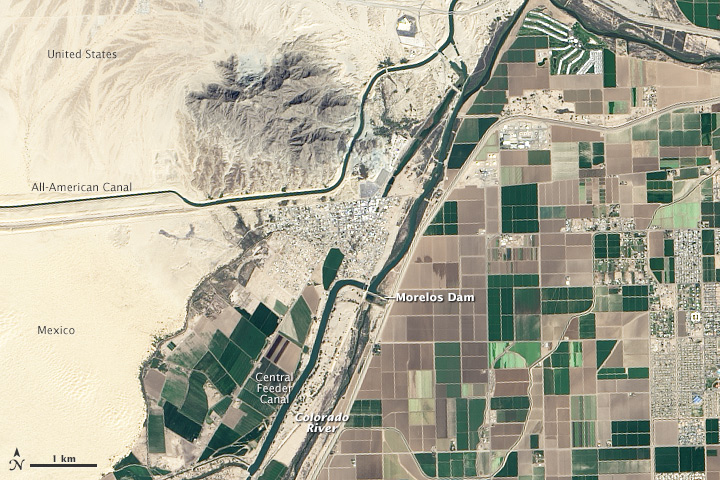Innovation
International flood experiment to restore Colorado River delta
These lush wetlands have been a dried-up wasteland since the river was dammed in the 1930s. Now, an agreement between U.S. and Mexican officials could help resurrect the ecosystem.


The Colorado River, which drains seven U.S. and two Mexican states along its nearly 1,500-mile course, once flowed freely into the Gulf of California. Then in the 1930s, multiple dams diverted the water to irrigate agricultural fields in the American Southwest. Since then, the lush Colorado River delta wetlands have become a dried-up, salt-caked wasteland.
But on March 23, through an agreement between U.S. and Mexican officials, the Morelos Dam along the border between Los Algodones, Baja California, and Yuma, Arizona, opened its gates to release water from Lake Mead downstream, with the hopes of resurrecting the arid ecosystem for the first time in decades. Nature reports:
The move, which follows bitter international battles over water rights, will mark the first time that the United States and Mexico have put water back into the parched riverbed for environmental purposes. It is both a practical and a symbolic victory for conservationists who have fought to restore what was once 800,000 hectares of lush wetlands, as well as a rare opportunity for ecologists worldwide to watch what happens.
A 1944 international treaty granted Mexico 10 percent of the river’s original flow; that’s being used for agriculture and cities. An addendum to the water treaty was drawn up in 2012. Known as Minute 319, it spells out how the two countries will share water surpluses and shortages until the end of 2017, Nature explains. And it mandates the experimental release of what it calls “water for the environment.”
So, a group of researchers calculated how much water should be released and recommended dam operators allow 130 million cubic meters (or about 34 billion gallons) of water to travel downstream over eight weeks, Nature reports. Even though that’s only about 0.7 percent of the river’s average annual flow, “it’s going to allow us to learn from this event and better determine the water needs for the delta in the future,” says Francisco Zamora Arroyo of the Colorado River Delta Legacy Program.
Most of the flow will come in a three-day pulse, which started on March 27, to mimic a small-scale spring flood. (At maximum flow, the rate was about 32,000 gallons per second.) Monitoring teams have been deployed, Nature explains:
No one is entirely sure how long the water will last or what its exact course will be. Hydrologists will gather data on changes in surface water and groundwater; ecologists will count saplings and determine whether that new habitat is attracting birds.
This feat of ecological engineering is designed to create broad expanses of moist sandbars for native cottonwoods and willows to sprout and spread -- invasive saltcedar have crowded them out in the past few decades. With data from previous experiments, researchers designed the pulse flow to keep the water table from dropping more than an inch a day so cottonwood roots can keep up. Nearly 400 bird species live in the delta, and another 400,000 migratory waterbirds pass through a year, Nature reports. Hopefully soon they’ll have more than just spotty patches of vegetation.
The flooding will continue until May 18. After that, smaller base flows will continue, helping to nourish this spring’s new growth. A coalition of six environmental groups raised about $7.5 million to plant trees and start buying up to 65 million cubic meters (17 billion gallons) of water from Mexican farmers, Science reports, so it’ll reach the riverside vegetation rather than be used for agriculture.
An interim report will be issued in 2016, when amendments to the treaty will be considered. Minute 319 is available through the International Boundary & Water Commission.
Image: Jesse Allen and Robert Simmon, using Landsat data from the U.S. Geological Survey / NASA Earth Observatory
This post was originally published on Smartplanet.com